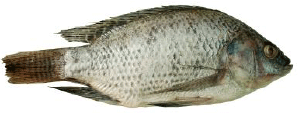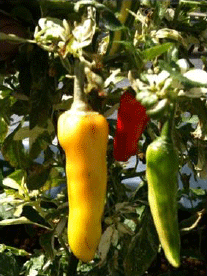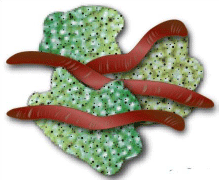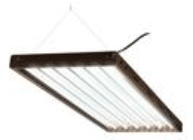12 Things You Need to Know to Garden Using Aquaponics
Published: June 11, 2014
By: The Aquaponic Source
Introduction
Aquaponics is an exciting new way to grow your favorite fruits, vegetables, and ornamental plants by combining the best of aquaculture and hydroponics to create a completely organic, sustainable and productive growing method. This method can be used both inside and out, it is dirt-free, weed-free, chemical-free, and it uses less than 1/10 the water needed by traditional, soil-based gardening.
In aquaponic gardening water is pumped from the fish tank into a grow bed that is filled with an inert growing medium. The medium is home to colonies of beneficial bacteria and composting red worms. The bacteria converts the toxic ammonia from the fish waste first into nitrites then into nitrates, and the worms convert the solid waste into vermicomost. At this point the fish waste has become a near-perfect food for the plants. The plants now filter the water by absorbing the converted fish waste, making a healthier environement for the fish. This symbiotic relationship between the plants, fish, and bacteria / worms creates an environment where all the living elements thrive.
This article is a guide to some of what you need to know to grow plants and fish successfully in a media-based aquaponic system. It is not intended to be comprehensive, but rather is a high level overview of some of the basic things you need to know in order to start an aquaponics system of your own.
The Living Components
1) Fish
Every aquaponic system starts with the fish. You can choose from a wide variety, but you must keep in mind that they must be freshwater fish. Start by deciding whether your intention is to grow fish for food or for show (you might want to read our blog post on this subject). If you are interested in growing edible fish, tilapia are most commonly used in aquaponics because they are a tasty, fast-growing fish that have low oxygen requirements and aren’t very fussy about their aquatic environment.

Tilapia are generally purchased at fingerling size (3 – 4”) and take 9 – 12 months to reach “plate” size (approximately 12” and 1.5 pounds). Many other edible fish can be raised as well, including trout, catfish, and perch. Don’t be afraid to try other species, but make sure to create an environment in which the particular fish species will thrive. Considerations include optimal water temperature, sociability of the fish, and diet.
2) Plants
You can grow almost any plant in a media-based aquaponic system as long as it is not acid loving, such as a blueberry bush. Since there is very little competition for food, water, and oxygen in the root-zone, plants can be planted much closer than in soil – up to twice as dense. The only real consideration is competition for light in the canopy of the mature plant. Make sure to plan for the ultimate size of each plant vs. it’s neighbors to make sure every plant will get the sunlight or grow-light exposure that they need.

3) Beneficial Bacteria (Microbes)
Bacteria are the engine of an aquaponic system. Without nitrifying bacteria converting the ammonia to nitrates the fish would quickly die from ammonia toxicity and the plants would starve for lack of nutrition. Nitrosomonas bacteria converts the poisonous ammonia into nitrites and then nitrospira bacteria convert the nitrites into nitrates. After establishing, bacteria will colonize on all surfaces of the system that stay in contact with the fish water.

4) Worms
If bacteria are the engine of an aquaponic system, worms are its secret weapon. Now the secret is out! After a few months, add composting red worms to your media-based aquaponics system to break down the solid fish waste into vermicompost that is extremely beneficial for the plants.
The Environmental Components
5) Temperature
An aquaponics system depends on the temperature of its environment, as it must be warm enough for fish, plants, and bacteria to live and grow.
The temperature requirements for fish vary depending on which fish varieties you raise. Tilapia, for example, are tropical fish and require water temperatures above 65°F (18.3°C), preferably closer to 80°F (26.6°C). Trout, on the other hand, do not survive in such warm water and prefer temperatures closer to 50°F (10°C). Some tools you may want to use for monitoring and maintaining your water temperature are a digital thermometer and a thermostatically controlled heater or water chiller. Also consider that there is a difference between the water temperature that a fish survives in, and the temperature at which it thrives. When a fish is thriving it is eating well and producing more waste to feed your plants.
6) Light
The fish and bacteria in your aquaponics system don’t rely on sunlight. The bacteria in the system grow best in the darkness of the grow bed, and light in the fish tank may lead to algae blooms. Light is imperative, however, for plants to survive.

When growing vegetative plants such as lettuce, spinach, or herbs you only needs to have about 10 - 12 hours of day light. If your goal, however, is to grow fruiting plants, such as tomatoes or cucumbers, you will need to replicate the mid-summer day length with 14 - 16 hours of light. One of the advantages to growing indoors or in a greenhouse is that you can supplement your lighting with sophisticated grow lights.
The System Components
7) Fish tank
The size of the fish tank you choose will define the ultimate size and flexibility of your aquaponics system so it needs to be an early consideration. If you are building a small, desktop system using an aquarium you will be restricted to using aquarium fish that will be comfortable in the size aquarium you own.
If you want to grow edible fish the most important rule-of-thumb when choosing a tank is to make sure it is made of sturdy, food grade or food safe materials. Next, make sure that the tank is at least 18” deep (457mm), and holds at least 50 gallons (189 Liters) of water. Tanks need to hold approximately 50 gallons (189 Liters) or larger in order to grow plate sized fish (12” and 1 ½ lbs, 300mm and 680g).
8) Grow bed
The amount of grow bed space you have will be a direct function of the size of fish tank being used. In general the grow bed to fish tank ratio that should be used is approximately 1:1, e.g. the volume of fish tank should be approximately equal to the volume of the grow bed. This ratio can also be thought of in gallons per cubic foot, striving for 6 gallons (22 liters) of fish tank to every cubic foot of grow bed. For example, a 50 gallon (189 liter) tank will support 6 to 8 cubic feet of grow bed.
The depth of the bed should be about 12”, or 300 mm deep. This allows most plants to be supported and encourages the bacteria in the system to fully establish itself.
9) Media
The media should be inert, meaning that it should not be biologically active or decompose. This creates the best bio-filter for your fish waste and the cleanest system overall. Most aquaponic gardeners use either gravel or expanded clay pellets (Hydroton).
10) Plumbing
Flooding the grow bed delivers nutrients to the plants and the bacteria; draining the beds oxygenates the water, the plants roots, and the bacteria. When a planting bed is periodically flooded like this it is called a flood-and-drain or ebb-and-flow system, and is what most media based aquaponic systems employ.
The Processes
11) Cycling
Cycling is the process of establishing nitrifying bacteria in your aquaponics system. The key to cycling is patience! Until nitrifying bacteria have been established you are at risk of ammonia levels becoming high enough to kill your plants, fish, and bacteria. To initiate cycling, ammonia must be introduced in order to attract the naturally occurring nitrosomonas bacteria. After another two weeks, or so, the existence of nitrites will attract nitrobacter bacteria. This second type of bacteria is what will change the nitrites into nitrates which are nearly harmless to the fish and are consumed by plants as food, therein filtering the water. After approximately 30 days of cycling you should reach the ultimate goal of low ammonia levels detected in your system. You will then be ready to fully stock your tank and plant your grow bed.
12) Monitoring
You should test the tank water daily during the initial cycling period to make sure the pH stays in the range needed to initiate cycling (6 – 8) and to track the progress of the developing biofilter so that you will know when to start stocking fish and when to start planting. We recommend doing this with an API Freshwater Master Kit. As the system matures it will become more stable and can then be tested weekly. If ammonia or nitrites are too high (both are toxic at 6 ppm), stop feeding the fish for a few days and consider replacing 1/3 of your tank water with fresh, de-chlorinated water.
Source
The Aquaponic SourceRelated topics:
Recommend
Comment
Share

Would you like to discuss another topic? Create a new post to engage with experts in the community.



